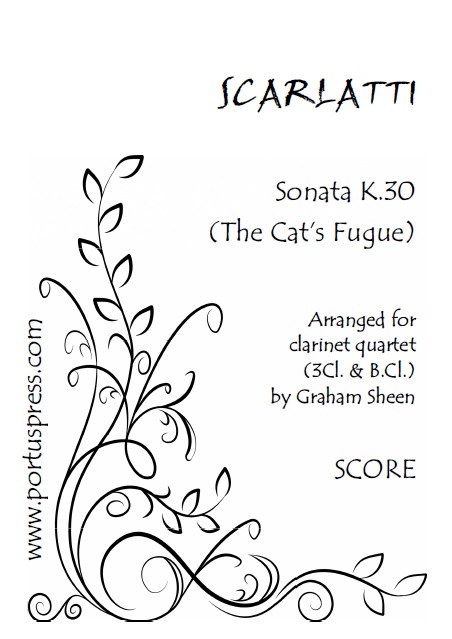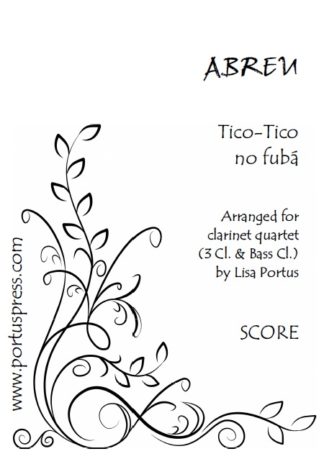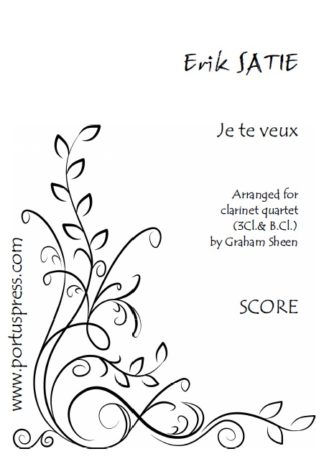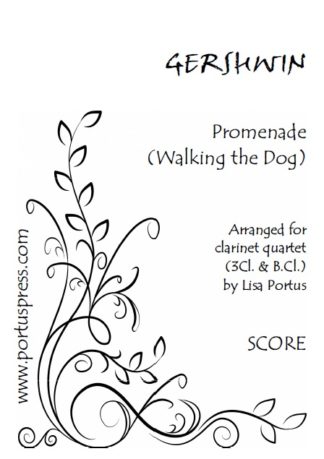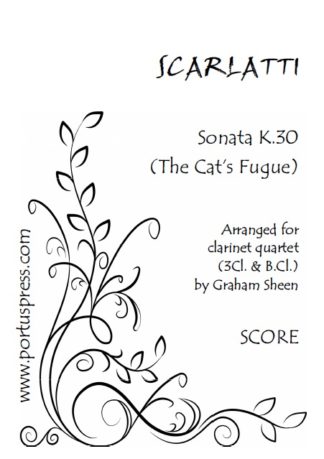Description
The Cat’s Fugue is the popular name of Domenico Scarlatti’s Sonata K.30, a one-movement harpsichord sonata which was published in 1739. It is the final sonata of a collection of 30 entitled Essercizi per gravicembalo (Exercises for Harpsichord). The collection is dedicated to King John V of Portugal, whose daughter, Barbara of Portugal, Scarlatti taught to play the harpsichord.
The nickname, which was never used by the composer himself, was introduced in the 19th century. The story goes that the fugue’s strikingly unusual motif was inspired by the notes picked out by a cat padding over a keyboard. On hearing it Scarlatti wrote down the phrase and used it as the lead motif of a fugue, creating a work of contrapuntal genius. We’ll never know if this story has any basis in fact but it does offer a plausible explanation for the theme’s wide and rather surprising intervals.
Arranged for clarinet quartet (3 clarinets and bass clarinet) by Graham Sheen.

